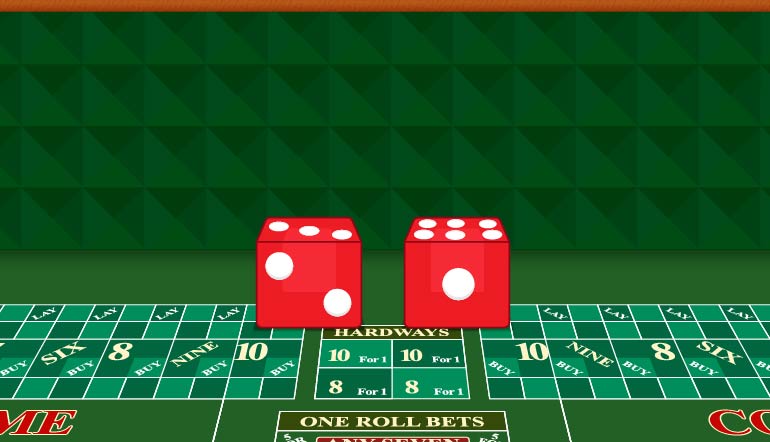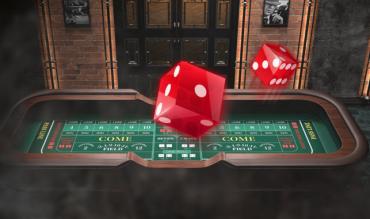When craps players want to bet on numbers 4 or 10, and sometimes on 5 or 9, they might ask themselves, “Is it time to buy?”
The answer might depend on local conditions.
Buy bets give players an opportunity to get lower house edges on 4 or 10 than on place bets, but not all casinos are created equal.
Some collect a 5 percent commission on all buys, while some collect it only on winning bets. And a select few allow you to push the envelope with commissions of less than 5%, depending on your bet size.
The Basics
You win and lose on buy bets in the same way as on place bets. If the shooter rolls your number before rolling a 7, you win. If a 7 comes up before you number, you lose.
The wrinkle is that in exchange for paying a 5% commission, winning bets pay true odds. Most commonly, you pay the commission regardless of whether you win or lose.
If you win a $20 place bet on 4 or 10, it pays 9-5 odds, so you win $36. But if you pay a $1 commission, then your buy bet is paid at true odds of 2-1, so your $20 bet would bring $40 in winnings.
Note that including the commission, you’re actually risking a total of $21, so there is still a house edge. But if you’re buying 4 or 10, that edge is lower than on a place bet.
The house edge on place bets on 4 or 10 is 6.67%. Paying the commission reduces the house edge to 4.76%.
There are still many bets with lower house edges, but if 4 or 10 are the numbers you want, buying them gives you a better deal than placing them.
Not so with the other box numbers, 5, 6, 8 and 9. On those, the house edges on place bets are lower than the 5% commission, so buying the numbers increases the house edge.
On 6 or 8, the house edge on place bets is 1.52%, and on 5 or 9 it’s 4%. If you buy the numbers instead, the house edge rises to 4.76% on all those numbers provided you’re paying the commission on losses as well as wins.

Commission Only on Winning Bets
If you’re paying the commission only on winning bets, the odds shift significantly. The change goes a long way toward making buy bets viable wagers in comparison to others on the table.
If the point is 4, you win on the three combinations that total 4 and lose on the six combinations totaling 7, so you win a third of the time.
Paying a 5% commission once per three wagers is the equivalent of a 1.67% commission overall, and that represents the house edge. It’s the same deal with 10. On either 4 or 10, if the house takes a commission only on winners, the house edge on buy bets is 1.67% – not far above the 1.41% on the pass line or the 1.52% on place bets on 6 or 8.
Similarly, 5 or 9 win four times per six losses, and paying a 5% commission only on winners drops the effective commission on all bets to 2%.
So on 5 or 9, if the house collects its commission only on winners, the house edge when buying 5 or 9 is 2%, half the edge on placing those numbers.
But on 6 or 8, where there are five winners per six losers, a 5% commission per win spread over 11 wagers is 2.27%. You’re still better off than sticking with place bets at 1.52%.
Pushing the Envelope
The $20 bet in the example at the top of this article was chosen because 5% of that is $1. The house doesn’t make change for less than $1 at the table. If you make a $5 buy bet, you’re still going to pay a $1 commission, so for you, the commission is a whopping 20%.
Obviously, you don’t want to do that. At any level where the commission is a higher percentage of your bet than the house edge, you’re hurting yourself by buying instead of placing.
But it can work the other way, too. What if you want to make a buy bet for $25 or some other amount of less than $40? Will the casino bump the commission up to $2 or let you pay a $1 commission?
That’s an issue Frank Scoblete and Jerry “Stickman” have tackled in the "Casino Craps: Shoot to Win!" and "I Am a Dice Controller" books. They have found tables that will accept $1 commissions on $25 wagers, and less commonly, on wagers up to $39.
Such deals are not advertised. It’s something you’d have to ask about before you bet.
What’s that do to the house edge? Let’s use 4 as an example, though the same arithmetic applies if the number is 10.

When your number is 4, you win one of every three decisions. There are three ways to make four – 1-3, 2-2 and 3-1 – and six ways to make a loser 7.
If you make a $25 bet and add a $1 commission, then per three decisions you invest $78. Winners are paid at true odds of 2-1, so on your one win, you keep the $25 wager and get $50 in winnings. After the three decisions, you have $75 of your original $78. The house has $3 – the three commissions.
Divide the $3 house take by the $78 invested, then multiply by 100 to convert to percent, and you get a house edge of 3.84%, better than the 4.76% it would be if you bought the 4 for $20.
What if the house charges the commission only on winners? Then, per three decisions, you wager $25 three times but pay only one $1 commission, for a total investment of $76. After your one win, you still have $75 of your investment, but the house has only $1.
The house edge is $1 divided by $76, multiplied by 100. That comes to 1.32%, lower than the 1.67% when buying the 4 for $20 with commissions paid only on winners.
The larger the wager while holding the line on a $1 commission, the lower the house edge. If you find the rare casino that will charge only $1 when buying for $39, the house edge is 2.5% with the commission on all wagers, or 0.85% with commissions only on winners.
With 5 or 9, true odds are 3-2. Odd-number bets would bring winnings in fractions of dollars, let’s use even numbers instead. If you buy for $24 and pay a $1 commission only on winners, the house edge is 1.64%. Buy for $38, and that drops to 1.04%.
On 6 or 8, true odds are 6-5, and you want winnings divisible by five. Buy for $25 and pay a $1 commission only on winners, and the 1.78% house edge is still higher than the 1.52% on place bets. Buy for $35, and the edge drops to 1.28%, so there is a potential edge reduction, but only at casinos that allow $1 commissions on such a high bet.
If your numbers are 6 and 8, sticking with place bets and ignoring the buys is the way to go nearly all the time.
Other numbers are another matter, You’re better off buying than placing 4 or 10 any time, and better off buying 5 or 9 provided commission is paid only on winners. If the house will let you push the envelope with $1 commissions on larger than $20 bets – and your bankroll is large enough that the bigger risk won’t hurt you – so much the better.


